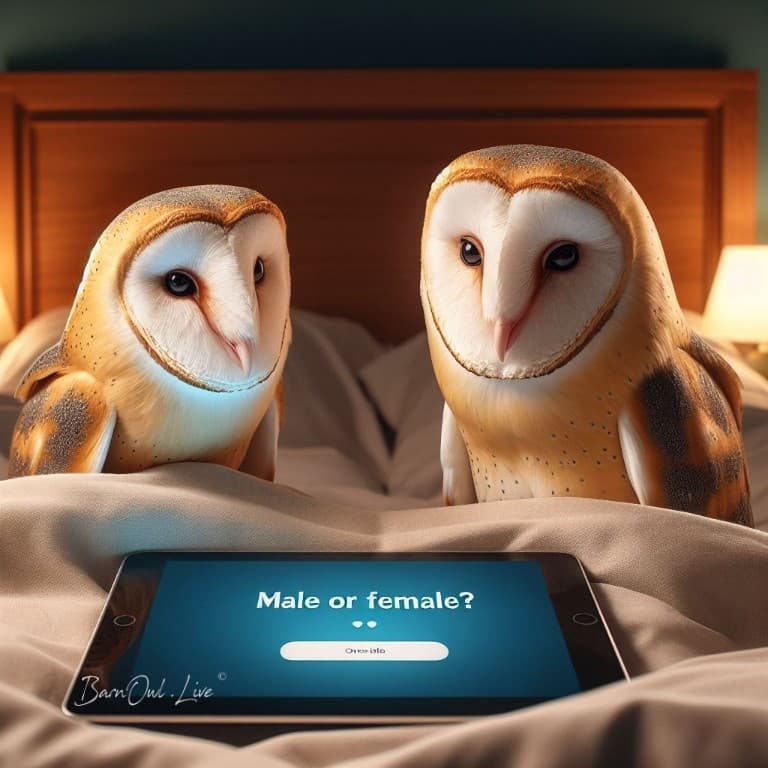Telling a barn owl’s gender isn’t that straightforward and requires a discerning eye, a touch of patience, and an understanding of the subtle nuances within their feathery world. While it’s true that these nocturnal creatures keep their mysteries well-guarded, there are several clues to uncover the secrets of a barn owl’s sex. Whilst not definitive on their own without examining the owl they do provide a useful guide.
Size- though a delicate discriminator, can provide initial clues. Females, in their regal splendour, often tip the scales ever so slightly, boasting a tad more heft and stature compared to their male counterparts. So when two owls are together it’s likely the larger one is the female.
The facial disc – a masterpiece of feathers, may unveil subtle secrets. In this dance of shapes, observe whether the heart-shaped mask leans towards a more rounded elegance or a slightly more angular demeanour. The female, it is said, may wear a mask with a touch more curvature, while the males might echo a nuanced heart or oval configuration.
Who wears the buff-coloured scarf? Female barn owls tend to have a slightly buff-coloured patch covering their throat, whereas the males’ throat feathers are whiter.
Overall Colour – When looking at a female barn owl, a discerning eye might catch a glimpse of a deeper hue, a touch more richness in the female’s attire, whilst the male “tends” to be whiter and brighter.
Spot the spots – Females tend to have little flecks or spots down their front flanks; these spots can extend all across the chest plumage or just to the sides. The males tend to have a purer white plumage but please note these can also have some speckled marks too.
Tales of the tail feathers – Females tend to have slightly darker tail feathers than a male.
The dance of the male – Observe the aerial ballet, a mesmerising performance under the moon’s tender glow. The male, the initiator, may unveil acrobatic displays and serenades, a symphony of love notes. The female, in turn, becomes the muse, reciprocating in the intricate choreography of courtship. So if you spot the leading owl it may be the male.
Territorial zest – The female, with her instinctive flair for nesting intricacies, may exhibit a territorial zest, a protective grace around the chosen abode. The male, a dutiful guardian, hovers with a supportive presence. Their roles, though harmonious, carry whispers of individuality.
